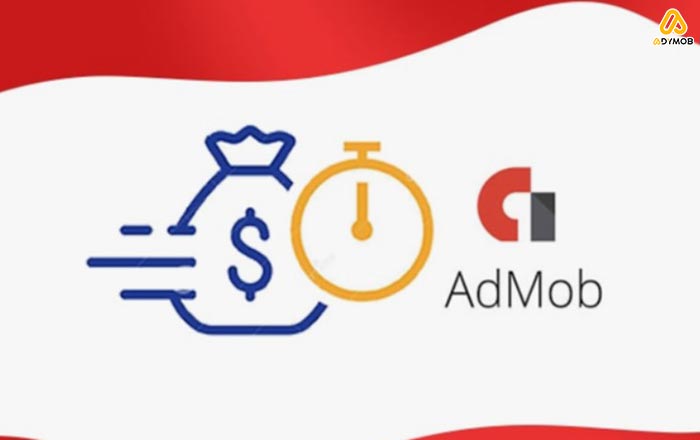If you want to use the most of AdMob and increase your income, you need to focus and learn more about AdMob’s powerful analytics and reporting features! But do you know how? If you don’t, you are at the right place.
In this guide, we will break down every metric, filter, and report on the AdMob platform, showing you exactly how to use them to optimize your app’s performance.
Get ready to master key performance indicators (KPIs) to track your ad revenue and user engagement. And access to further tips and tricks related to AdMob analytics.
Be ready to take your app’s monetization to the next level and dive deep into the data-driven world of AdMob!
What Are the Best AdMob Analytics Features?
In this part, we are going to introduce you to the features that help you understand how users interact with ads in your app.
This is what AdMob Analytics and Reporting features offer! This suite of tools goes beyond just showing you how much money you’re making.
It allows the developers and app publishers to optimize their ad monetization strategy and boost their app’s overall performance on the AdMob platform.
![]() These are the key features that make them easy to understand:
These are the key features that make them easy to understand:
1. Filters: Focus on What Matters
Say you have a fitness app with different workout routines. Filters allow you to focus on a specific routine’s ad performance.
You can see things like impressions (how many times the ad was shown) for that routine over the past week.
This AdMob feature helps you identify which routines users are more likely to engage with ads for, allowing you to place more relevant ads in those sections potentially.
2. Dimensions: Uncover Hidden Gems
With the Dimensions feature on AdMob, you can analyze your data in ad format (banner ads at the bottom of the screen, interstitial ads that appear between screens, etc.).
You might discover that banner ads are performing well, but interstitial ads are lagging. This helps you choose different strategies, perhaps focusing on optimizing interstitial placements for better user engagement.
3. Metrics: Know Your Numbers
The other reporting feature that is vital to this platform is the click-through rate (CTR), which tells you how often users see an ad and then click on it. Let’s say your puzzle game has a high CTR for video ads.
Let’s consider your puzzle game has a high CTR for video ads: This implies that users are interested in the video material, which could mean that you should include additional video adverts that suit your app’s theme.

4. Customizable Reports: Craft Your Data Story
We highly suggest you not get stuck in generic reports! AdMob allows you to generate reports that are suited to your requirements. You may specify the KPIs, ad types, and periods that are most important to you.
Consider measuring user interaction with advertisements across multiple device types (Android versus iOS) for one month. This allows you to see if a particular ad format resonates better with a specific user base.
5. Supercharge with Firebase Integration
If you want to take your AdMob analytics to the next level, you can link your AdMob app to Firebase. Why is the reason? It can give you access to a treasure trove of user data. AdMob data gets integrated with user metrics like lifetime value (how much a user spends in your app over time).
You can personalize your ad experiences for different user segments. For instance, if you identify high-value users who frequently purchase in-app items, you can show them targeted ads for premium features they might be interested in.
In essence, AdMob analytics and reporting equip you with the tools to analyze ad performance, understand user behavior with ads, and ultimately optimize your app’s monetization strategy for long-term success.
Now, let’s provide you with the steps for using these features and metrics.
How To Use AdMob Analytics Reports?
![]() Now that you understand the core features of AdMob Analytics and Reporting let’s dive into how to use them effectively:
Now that you understand the core features of AdMob Analytics and Reporting let’s dive into how to use them effectively:
Getting Started: Access to Your Reports
- Login to your AdMob account.
- Click on the “Reporting” tab in the navigation bar.
- You’ll land on the “Home” dashboard, which displays an overview of key metrics like estimated earnings and impressions.
- Tailoring Your View with Filters
- Click on the “Filters” button located above the report.

![]() You can filter data by various criteria like:
You can filter data by various criteria like:
- App: Select a specific app to analyze its ad performance.
- Date Range: Choose a timeframe relevant to your needs (e.g., last week, last month).
- Ad Unit: Focus on a particular ad unit within your app (e.g., banner ads on the main screen).
- Location: Analyze ad performance in specific countries or regions.
By applying filters, you can zoom in on the data that matters most for your strategic decisions.
Now, let’s dive deeper into Dimensions: Look for the “Dimensions” dropdown menu next to the filters button.
![]() This menu allows you to categorize your data by various aspects, such as:
This menu allows you to categorize your data by various aspects, such as:
- Ad Format: See how banner ads perform compared to interstitial ads.
- Device Platform: Uncover if users on Android devices engage more with video ads than those on iOS.
By using dimensions, you can identify patterns and optimize your ad strategy based on user behavior with different ad formats and platforms.
Understanding Performance with Metrics
The report will display various metrics by default, but you can customize them. These are some of the key metrics to focus on
![]() Including:
Including:
- Impressions: The number of times your ads were displayed.
- Clicks: How many times have users clicked on your ads?
- Click-Through Rate (CTR): (Clicks / Impressions) x 100. A higher CTR indicates users are finding your ads relevant.
- Cost per Mille (CPM): Estimated earnings per 1,000 impressions.
By analyzing these metrics, you can measure user engagement with ads and identify areas for improvement.
How Can You Save Reports for Future Reference?
After customizing your report with filters, dimensions, and the desired timeframe, click on the “Save” button to easily access this specific report setup in the future for comparisons and monitoring trends over time.
These are the best methods you can use to leverage analytics features on AdMob and make sure your strategies are leading you to success.
Narrative End
AdMob analytics and reporting features help you step into the world of app monetization without guessing games!
In this article, we talked about AdMob’s powerful reporting suite. All you have to do is know that this data is vital for your monetizing strategies, so do not underestimate them at all.
How are you using AdMob analytics and reporting features to optimize your app’s performance? It is time to share your experiences and best practices in the comments below.

